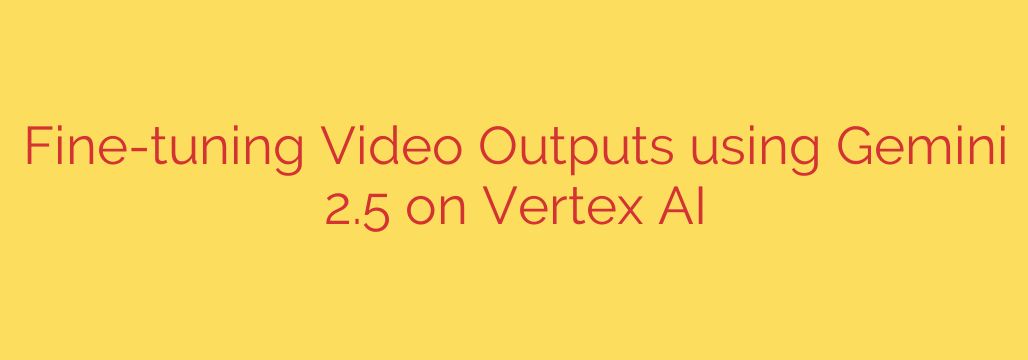
Unlocking powerful capabilities in video understanding just got easier with advanced model tuning on a leading cloud AI platform. Developers and data scientists can now significantly enhance how AI models interpret and interact with video content by leveraging fine-tuning techniques.
The process involves taking a sophisticated foundation model, known for its native ability to understand video, and adapting it to perform specific tasks with higher accuracy. This is particularly useful for complex scenarios or niche domains where out-of-the-box performance might not be sufficient. The goal is to tailor the model to excel at particular downstream tasks, such as generating detailed video captions or answering specific questions about video content.
The underlying platform provides a comprehensive suite of tools for managing the entire fine-tuning lifecycle. This includes preparing your dataset, which typically involves structuring video segments and corresponding text annotations in a specific format like JSONL. You then configure the tuning job, setting parameters such as the number of training cycles (epochs) and the learning rate, which controls how quickly the model adjusts its parameters.
Once configured, the platform handles the execution of the fine-tuning job, utilizing optimized infrastructure. After training is complete, the newly tuned model can be deployed for inference, allowing you to apply it to new videos. Evaluation metrics are also available to assess the performance improvement achieved through fine-tuning compared to the original model.
This capability empowers businesses and developers to build highly accurate and specialized video AI applications, from enhancing media analysis to improving accessibility features and beyond. By precisely tailoring models to specific needs, the potential for innovative uses of AI in understanding the visual world becomes virtually limitless.
Source: https://cloud.google.com/blog/products/ai-machine-learning/how-to-fine-tune-video-outputs-using-vertex-ai/








